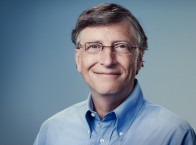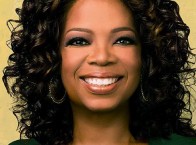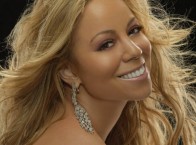Richard Attenborough was an English actor, film director, film producer, entrepreneur and politician, famous for his work in the 1983 “Gandhi,” 1993 “Jurassic Park” and 1994 “Miracle on 34th Street.” Here are 42 facts about the great actor:
- Attenborough was the president of Royal Academy of Dramatic Art (RADA) and British Academy of Film and Television Arts (BAFTA).
- He was an actor, director, producer, entrepreneur and politician all rolled into one.
- He was born on August 29, 1923 in Cambridge. He had two siblings David Attenborough, a naturalist and John Attenborough an executive. He also had two sisters Irene and Helga Bejach adopted from Germany.
- Attenborough’s father Frederick Levi Attenborough was a scholar and academic administrator who was a fellow at Emmanuel College of Cambridge and wrote a standard text on Anglo Saxon law. His mother Mary Attenborough was the founding member of marriage Guidance Council.
- He served in the Royal Air Force during Second World War. He was in the RAF Film Unit at Pinewood Studios and went on many missions to record Bomber Command sorties from the rear gunner’s position.
- He started his acting from a stage show at the Little Theatre in Dover Street, Leicester at the age of three.
- Attenborough took to film career in the 1942 film by the title “In Which We Serve.” He played the role of a Young Stoker, who deserts his ship under fire. He was recommended by director turned agent Albert Parker.
- He married Sheila Sim in 1945 and lived in Beaver Lodge on Richmond Green, London. She is the elder sister of Gerald Sim, the actor.
- He was type cast in most of the films which followed. He was either a petty thief or a coward. He played the role of Percy Boon in the 1948 film “London Belong to Me,” and as Stoker Snipe in the 1950 film “Morning Departure.”
- He was voted by the poll of film exhibitors in 1949 as sixth most popular cast in the box office.
- He started a production company “Beavers Film” along with Bryan Forbes in 1950s. The company produced “The Angry Silence,” in 1960 and “Whistle Down the Wind.” He was also a part of “The Angry Silence” cast.
- Their production of “The Angry Silence” was banned in Wales by the trade unions for its theme. The cinema chains were controlled by miners union. He personally intervened and screened for the union leaders that the ban was revoked.
- Attenborough and his wife were the original casts of the longest running stage play “The Mousetrap,” which was staged in Ambassadors Theatre in 1952. It is still running at the St. Martins Theatre.
- He was a shareholder in the West End Production of Mousetrap. He sold some of the share to start a restaurant “The Little Elephant” and the balance share were sold for completion of film Gandhi.
- In 1950s he was cast in the 1956 comedy film “Private Progress” in which he plays the role of a Private Cox and in 1959 in the movie “I’m All Right Jack.”
- He played the role of RAF Squadron Leader Roger Bartlett in the 1963 movie “The Great Escape,” his first big Hollywood film blockbuster. Attenborough got the role after the original choice Richard Harris pulled out.
- His performance in the 1964 film “Séance on a Wet Afternoon” as Billy Savage, won him BAFTA Award for Best Actor. He was also the films co-producer.
- Attenborough won Golden Globe Award for Best Supporting Actor in his portrayal of Machinst’s in the 1967 film “The Sand Pebbles.”
- He won the Golden Globe Award for the second time as Best Supporting Actor, for his film “Doctor Dolittle” in 1968. Attenborough got the role because of Huge Griffith’s drinking problem. Steve McQueen became his lucky charm, as he was cast in his both his award winning movies.
- He received excellent review for his portrayal of serial killer in the film 1971 film “10 Rillington Place.” In an interview to The Times on May 18, 1970, Attenborough said, he accepted the part without seeing the script and he never felt so totally involved in any part as this.
- He started his directional venture with the screen version of musical hit “Oh! What a Lovely War” in 1969 and followed it with biographical film on Future British Prime Minister, Winston Churchill in 1972 “Young Winston.”
- In the film “A Bridge Too Far” in 1977, Attenborough was seen as lunatic wearing glasses watching the soldiers. This was the only acting role in the film he directed.
- His next film “Magic” in 1978 is one of the three movies not based on actual events. He directed 12 movies in all.
- After his appearance in the 1979 “The Human Factor,” he didn’t accept any acting role for 14 years.
- He won two Academy Awards for the film “Gandhi” in 1982. He won the Best Director and Best Picture award as the film producer. He also won 1983 Golden Globe Award for Best Direction and Best Foreign Film.
- He was nominated for the Golden Globe Award for the Best Director for the movie “A Chores Line” in 1985 and “Cry Freedom” in 1987. The film “Cry Freedom” on life and death of anti-apartheid activist Steve Biko was selected as one among the “Top Ten Movies of the Year” in 1987, by USA’s National Board of Review.
- In 1993, he was cast as John Hammond in the science fiction film by Steven Spielberg “Jurassic Park” and in its sequel “The lost World: Jurassic Park.” Attenborough was the last to be cast.
- In 1992, he directed and produced the film “Chaplin” starring Robert Downey Jr. The movie was originally scheduled to be distributed by Universal Studio, but backed out for want of bigger names in the starring role, which Attenborough refused.
- In 2007 he directed and produced “Closing the Ring,” a love story based during Second World War. This was the last movie he directed before his death.
- Attenborough was the president of Muscular Dystrophy campaign for 33 years before becoming its honorary life president. In 2012 the charity established Richard Attenborough Fund in his honor.
- He is also patron of “United World College” movement in around 15 countries. He contributes to colleges that are part of the organization.
- In memory of his daughter who died in the Tsunami on December 2004, he founded “Jane Holland Creative Centre for Learning” in Switzerland.
- He advocates non-racial education for all. His philosophy was the inspiration for directing the film “Cry Freedom.” With his wife he founded the Richard and Sheila Attenborough Visual Arts Centre.
- On March 20, 1998, he was elected as the Chancellor of the University of Sussex. He held the post till July 2008.
- In 1940, he went to the Chelsea F.C club to improve his physical condition for a film “Brighton Rock.” He went on to become the director of his favorite football club for two terms. On November 30, 2008 he was honored with the title “Life President” at the club’s stadium.
- His lifetime ambition was to make a film about the political theorist and revolutionary Thomas Pine, who he considers to be his hero and "one of the finest men that ever lived." A website named “A Gift for Dickie” was launched in June 2008 to raise a fund of £40m in 400 days for filming of the movie, which did not materialize. The money that had been raised was refunded.
- He and Sheila had two daughters and a son. His elder daughter Jane Holland died in the Tsunami on December 26, 2004. Their son Michael is a theatre director and another daughter Charlotte is an actress.
- In 2008, he published his autobiography titled “Entirely Up To You, Darling” in association with Diana Hawkins.
- Attenborough was struck with stroke in December 2008 and later was confined to wheel chair since May 2011. In June 2012 he was diagnosed with senile dementia and after prolonged illness he breathed his last on August 24, 2014.
- He was appointed a “Commander of the Order of the British Empire” (CBE) in 1967 and in the 1976 New Year Honors he was made “Knight Bachelor.”
- In 1983, the Indian government honored him with the Padma Bhushan, India’s third highest award for his contribution to art.
- In most of his films, either as actor or as a director, the subject was related to real life personality or War movies.

 Share on Facebook
Share on Facebook




















